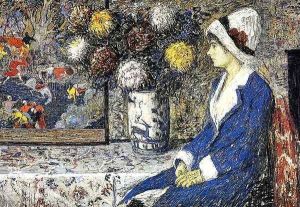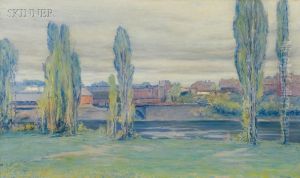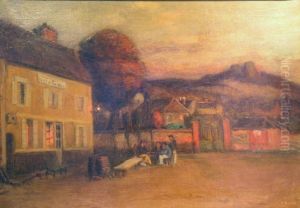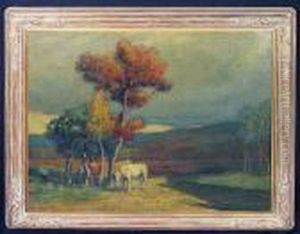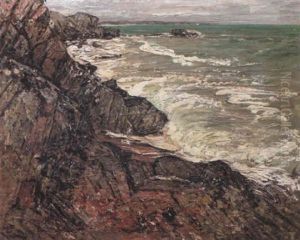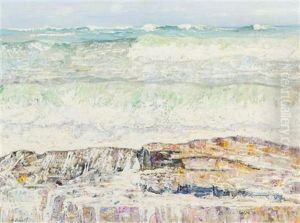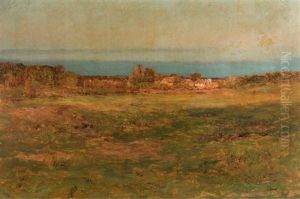Henry Golden Dearth Paintings
Henry Golden Dearth was an American painter known for his tonalist and impressionist landscapes, as well as for his genre scenes and still lifes. Born on April 22, 1864, in Bristol, Rhode Island, he demonstrated artistic talent at an early age. Dearth left for Paris to study art at the Académie Julian under renowned teachers such as Gustave Boulanger and Jules Lefebvre. It was in France where he was exposed to the tonalist aesthetic, which emphasized mood and shadow, and which would greatly influence his later work.
After returning to the United States, Dearth enjoyed initial success and was well-received by critics and the public. He became a regular exhibitor at the National Academy of Design and also showed his work at the Paris Salon, where he received an honorable mention in 1889. His early work often featured the New England coast, where he captured the subtle interplay of light and atmosphere.
As Dearth's style evolved, he increasingly turned to the French countryside for inspiration, and his work began to reflect the influence of the French impressionists, particularly in his use of color and light. Despite this shift, he never abandoned the moody, introspective qualities that characterized his tonalist beginnings.
Dearth was also known for his interior genre scenes and still lifes, which show a remarkable attention to detail and a rich palette that suggests the influence of the Dutch masters. His interiors often convey a sense of quiet contemplation, with an emphasis on the harmony between objects and their surroundings.
Unfortunately, Dearth's career was cut short when he died unexpectedly on March 27, 1918, in New York City. Though his name is not as widely recognized as some of his contemporaries, he left behind a body of work that continues to be appreciated for its quiet beauty and technical skill. His paintings can be found in the collections of major museums across the United States, including the Metropolitan Museum of Art in New York and the Smithsonian American Art Museum in Washington, D.C.
